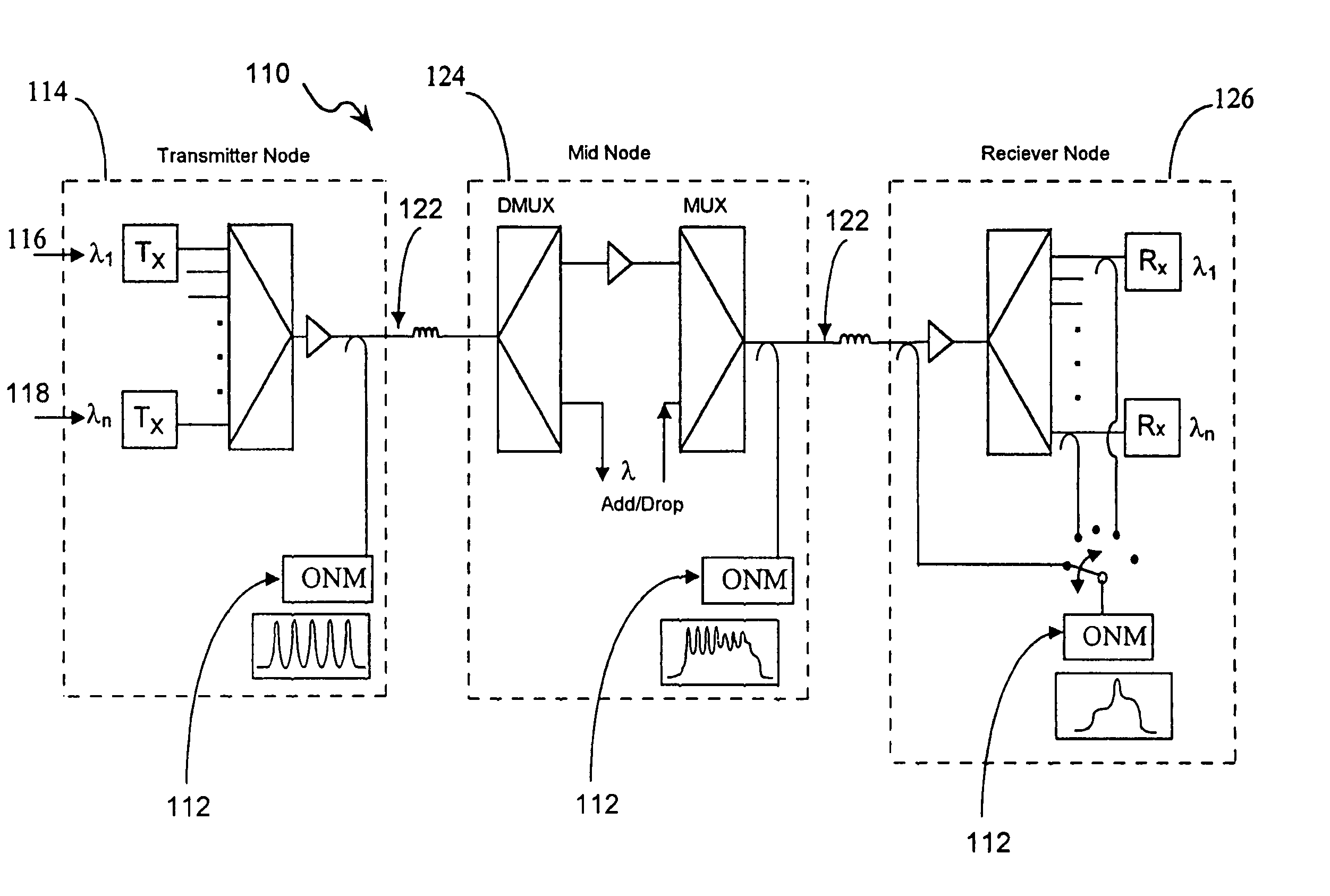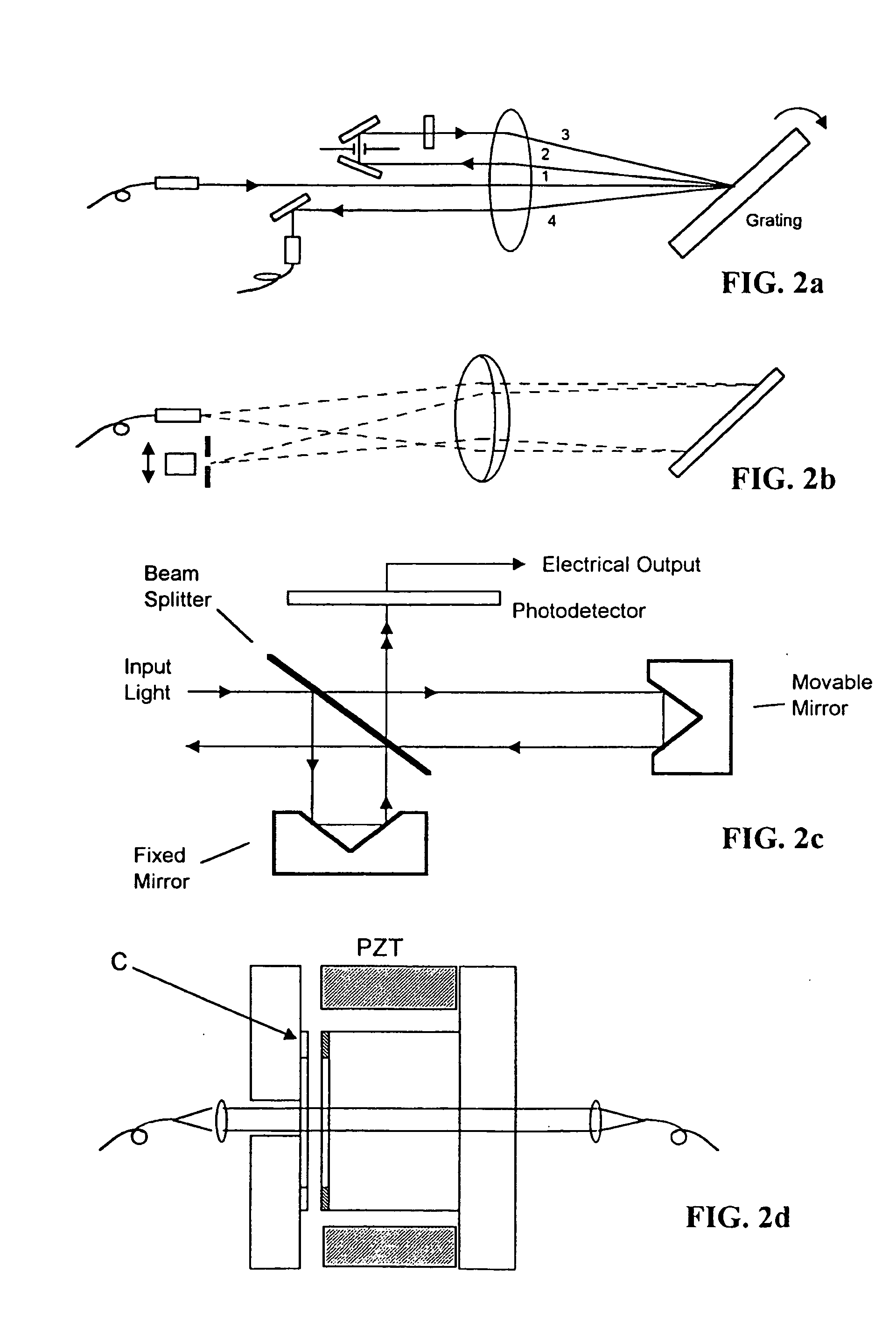Optical network monitor
a network monitor and optical network technology, applied in the field of optical network monitors, can solve the problems of degrading the signal to noise ratio (snr) of other channels, not having the needed snr to carry traffic, and degrading some or all transmissions
- Summary
- Abstract
- Description
- Claims
- Application Information
AI Technical Summary
Benefits of technology
Problems solved by technology
Method used
Image
Examples
Embodiment Construction
[0043] The present invention is directed to providing an optical spectrometer or optical network monitor that examines the spectral content of a signal from an optical fiber and relays the information to operators of optical networks or to other interested parties. More preferably, the present invention is designed to examine the spectral content of DWDM networks. The input to the spectrometer is usually a tap off a fiber optical communication line that is carrying multiple channels, each at designated wavelengths. The output of the spectrometer includes data arrays that define the channels present and also includes measurements and calculations that are related to channel parameters.
[0044] The network monitor configuration is based on the combination of an input fiber, grating, mirrors, and a linear detector array in a solid state module that has no moving parts. This optical module is coupled to a processor card that processes the information using internal algorithms particular ...
PUM
 Login to View More
Login to View More Abstract
Description
Claims
Application Information
 Login to View More
Login to View More - R&D
- Intellectual Property
- Life Sciences
- Materials
- Tech Scout
- Unparalleled Data Quality
- Higher Quality Content
- 60% Fewer Hallucinations
Browse by: Latest US Patents, China's latest patents, Technical Efficacy Thesaurus, Application Domain, Technology Topic, Popular Technical Reports.
© 2025 PatSnap. All rights reserved.Legal|Privacy policy|Modern Slavery Act Transparency Statement|Sitemap|About US| Contact US: help@patsnap.com



